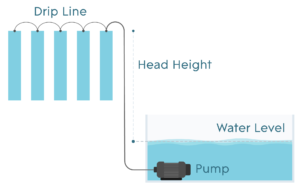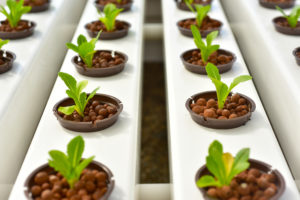If you grow hydroponic strawberries, you are in for a real treat! Why settle for strawberries in one season when you can have them all year round? Hydroponic strawberries don’t have a season, and if you select the right variety, they’ll continuously produce fruit.
Hydroponic Strawberries: The Basics
Strawberries you grow indoors are a lot like those you would grow outside. But since you’re in charge of their environment, you need to know the basics.
- Ideal pH: 5.8 to 6.2
- Better suited to low salts
- Optimal EC: 1.0 (some varieties range up to 3.0)
- Light for 8-12 hours daily
- Temperature range: 65 to 80 degrees Fahrenheit (18.3 to 26.6 Celsius)
- Best grown from runners
- 3 main varieties, some fruit continuously
- Harvest 8 to 9 weeks once planted
- Good for vertical systems, NFT, ebb and flow
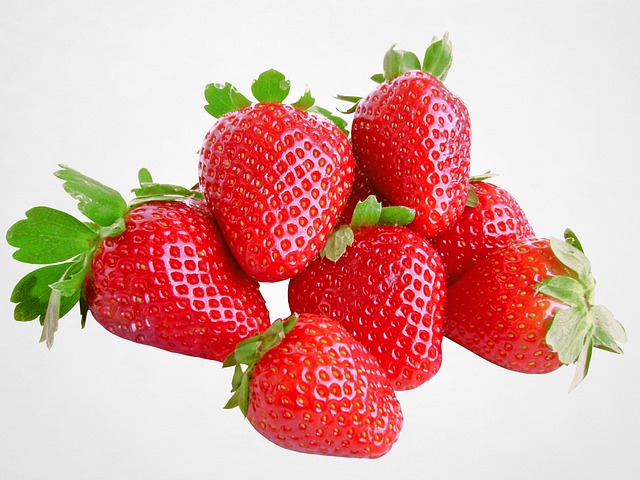
Choosing Your Variety to Grow
There are a ton of different types of strawberries. If you want to grow hydroponic strawberries, chances are part of the reason is so you can enjoy them all year. With that in mind, it’s important to mention that not every variety fruits continuously. There are three major varieties of strawberry, and numerous different cultivars of each.
Day neutral
This is the most popular variety, especially when you grow hydroponic strawberries. Day neutral strawberries produce fruit continuously, rather than in one or two big harvests. As long as conditions are favorable, they keep fruiting. Even in commercial greenhouses, day neutral strawberries are the forerunner. If you’re still getting familiar with growing plants in hydroponics, this is the best (and most rewarding) choice.
Everbearing
Despite the name, everbearing strawberries do not produce fruit continuously. However, they are the first strawberry varieties designed to fruit for more than one large harvest. The harvests don’t yield quite as much as day neutral varieties, which were developed from the everbearing crops. This variety produces a couple harvests each year, and with great care, some may produce up to three crops.
Short day
Short day strawberries start blooming in winter (during the ‘short days,’ hence the name). By early spring, they produce their fruit. These varieties produce a high yielding harvest, but they only do it once per year. It’s much more common to see short day strawberries growing outside than hydroponically. Growing short day varieties simply isn’t worth the effort for most hydroponic hobbyists.
Recommended Equipment
Which Hydroponic Systems Can You Use?
A benefit of growing hydroponic strawberries is that they are so versatile. They have small root systems, so they thrive in a ton of different setups. One thing to keep in mind is harvesting. No matter what hydroponic system you use, it should be fairly easy to pick ripened fruit.
So, what are the best hydroponic systems for growing strawberries?
Harvesting ease is near the top of the list. Because of that, the best systems to grow hydroponic strawberries are NFT, ebb and flow, and vertical or stacked setups. Vertical systems allow strawberries to vine and climb, but it’s also easy to harvest the berries. NFT (Nutrient Film Technique) systems are another great option that make harvesting a no-hassle deal. Ebb and flow allows you to expand your plants, since you can easily root new runners.
Starting Hydroponic Strawberries
To grow hydroponic strawberries, getting the right start is paramount. Can you grow hydroponic strawberries from seeds? Sure! But unless you’re willing to wait a few years, it’s better if you don’t. If you start with seeds, it might take anywhere from two to three years before they reach maturity and produce fruit. In short, growing strawberries from seeds takes a lot of time and patience.
The other option is using runners, also known as stolons. What are runners? They are the vines that grow out from the ‘mother’ plant. These vines have nodes where roots emerge and eventually sink into the ground, creating a new plant. Using runners makes for a much faster, easier process.
If a shortened time to harvest isn’t enough of a reason, there’s another benefit to using runners. While seeds vary in quality and characteristics, runners produce a genetic copy of the plant that sprouts them. Essentially, runners are natural clones of the original strawberry plant.
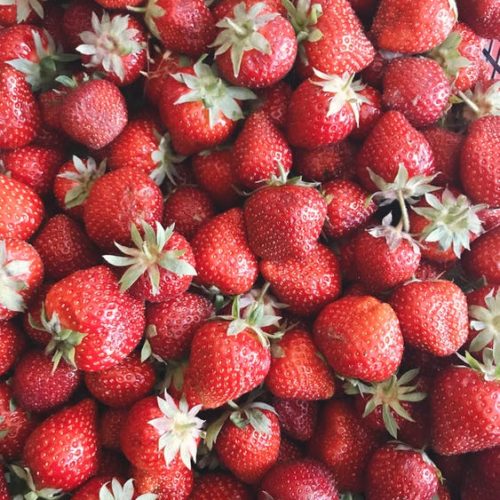
Taking runners from a growing plant
You can take runners from a mature strawberry plant. As the plant sends out runners, place a container with water or damp growing medium underneath the ‘nodes’. Let the emerging roots barely touch the surface of the water or medium. Within a few days, you’ll see roots begin growing down into the container.
Runners are ready for transplant when:
- They have roots that reach at least 2 inches (5 cm) in length.
- The vine ‘running’ from the mother plant to the node darkens and turns brittle.
When the vine to the new plant (and roots) easily snaps away, it signals that the new root system is established enough to obtain its own nutrients.
Using clipped runners
Not everyone has a live strawberry plant to take runners from. That’s okay too. Your local gardening store or nursery more than likely has runners in stock. Of course, you’ll need to ask for them specifically- they’re not generally out with other plants for sale. Nurseries often keep runners refrigerated for growing strawberries next season. The cold temperatures allow runners to ‘hibernate.’ You can do this with some of your runners too, if you want to save some you have pruned off your plants. Then, even if you switch crops later on, you can still grow strawberries.
Set up to Grow Hydroponic Strawberries
Before you transplant, make sure you have the right conditions to grow hydroponic strawberries. Check your system and make sure it’s positioned for easy harvesting and pruning. Once that’s in place, make sure you have the environment strawberries need.
A slightly acidic pH is ideal. Most strawberry varieties do best with pH between 5.8 and 6.2. Really, for some plants pH can be as low as 5.5, and as high as 6.5. Test your water before adding plants to the system. If your pH is too high, you can use pH down products to get it in range.
Unlike some fruiting plants, strawberries prefer lower salts. The target EC can depend on the variety, but 1.0 to 1.4 suits most strawberry plants. There are plenty of nutrient solution formulas made just for growing strawberries. If you are not comfortable with mixing nutrients yet, you can use these.
Strawberries do best with cooler, somewhat warm temperatures. Anywhere between 60 to 80 degrees Fahrenheit, or 15.5 to 26.6 Celsius, is a good daytime temperature. Remember, at night, plants should have temperatures lowered about 10 to 12 degrees F, or about 5 degrees Celsius, from the day temperature.
Your best bet is using full spectrum grow lights. One great thing about growing hydroponic strawberries is that their lighting needs don’t really change as they mature. Most varieties do well with 8 to 12 hours of light. Some varieties can take a little more light and produce good yields with up to 14 hours of light.
When it comes to growing medium, you have plenty of choices. Perlite and vermiculite are popular choices, provided you mix them with another growing medium. Clay pebbles are a good ‘mixer’ since they add aeration and help the growing medium drain nutrient solution properly.
Transplant Runners
Once everything is ready and your runners have a good root system established, they are ready to transplant. Put the runners in your hydroponic system. If you use a media based system (like ebb and flow or DWC), make sure you place plants so that the growing medium just covers the roots. You don’t want the rest of the plant covered by your medium.
Strawberries are a little more straightforward than plants you grow from seed. While some runners may fail, the majority already have the development and root systems they need. Still, your plants need plenty of space. Eight inches (20 cm) between plants is ideal. Just do not place them any closer than six inches (15 cm) from one another.
Optional: prune, stabilize, then grow to harvest
Some people start to grow hydroponic strawberries right off the bat. Others prefer letting plants get a bit more established before they grow fruit. There’s nothing wrong with going the route growing for harvest right away. Still, letting plants grow more foliage and waiting for fruit can make more reliable crops.
Yes, it does take longer, but it’s a proven method for reliably fruiting strawberry plants. Here is how it works:
When flowers start showing up, pinch them off and prune excess growth. This keeps the strawberry plant from using its energy to produce fruit. The energy is used instead to grow more foliage (leaves, stems, and basically the green parts of the plant), and establish a stronger root system.
If you choose this method, you only need about four to six weeks.
Care for Young Strawberry Plants
Young strawberry plants are fairly easy to care for, once they are established. Remember that strawberry plants prefer low salts. That means you should not ‘overfeed’ them. Add nutrients when your EC lowers beneath the ideal level. Add water when you notice some of the nutrient solution in your hydroponic reservoir evaporating. You should always measure EC and pH whenever you add water or nutrients.
Keep a stable environment and pick up any dead plant matter you see. When you grow hydroponic strawberries, it doesn’t take too long before you can harvest the berries. Still, plan to wait at least eight or nine weeks before fruit appears.
Care for Mature Strawberry Plants
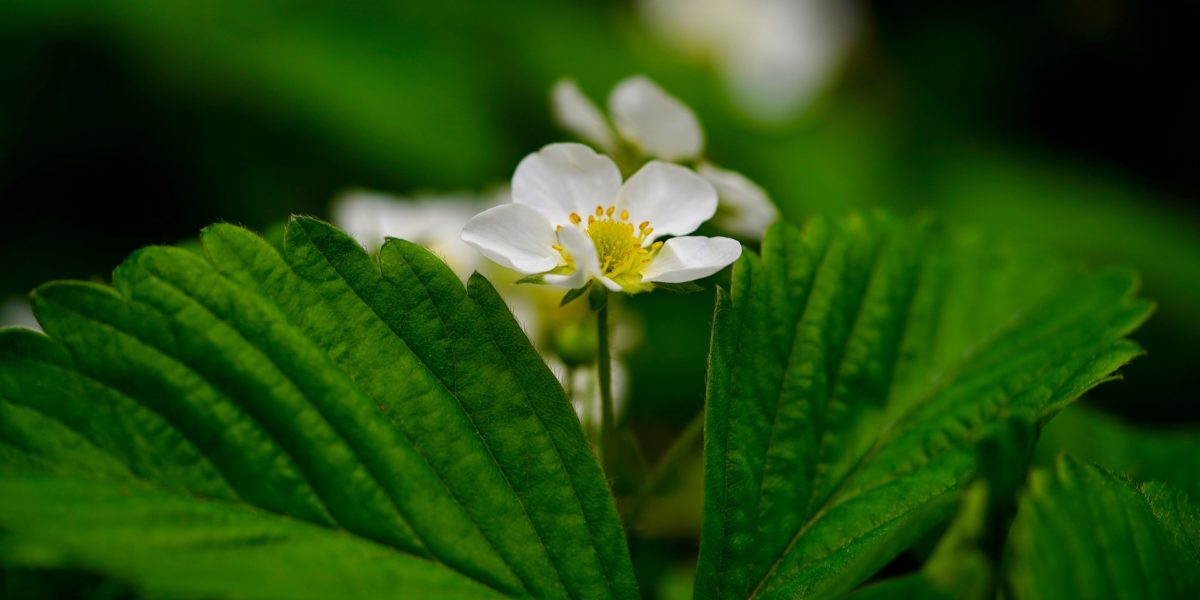
You will notice when plants mature because they will start developing flowers and runners. Help your plants produce a good harvest by giving them the nutrients they need. You can use a bloom formula designed for flowering and fruiting or mix your own (if you are more familiar with hydroponic nutrients). The blend you use should have some nitrogen (N), but not too much. Your plants need higher phosphorus (P) and potassium (K) as they mature. Magnesium and calcium are also important if you want a good strawberry harvest.
Many growers prune runners when their strawberry plants begin flowering and fruiting. Basically, it allows the plants to continue focusing on producing fruit, rather than propagating new plants.
Strawberry plants need pollination. Luckily, they are fairly easy to pollinate since each plant has both male and female parts.
The best way to pollinate indoor hydroponic plants is with a small paint brush. Swipe it around the inner center of the flowers and transfer the pollen to the other flowers. Try and repeat the process for all the flowers and plants in your system. Some hydroponic gardeners even have success simply running their hands over all the flowers. Keeping a fan on low also helps spread pollen around, so there is less work on your part.
Over time, you will see the small, initial fruits grow larger and develop a more vibrant color. How do you know when strawberries are ready to harvest? They will look larger, but they also have a bright red color. Then, harvest and enjoy the fruits of your labor!
Common Problems with Strawberries
Strawberries are susceptible to certain pests and diseases. When you grow hydroponic strawberries, you don’t have to worry as much about bugs trying to eat and destroy your crops. Still, hydroponic strawberry plants come with their own concerns.
For instance, strawberry plants are fairly susceptible to crown rot. This can happen to outdoor strawberry plants too, but since hydroponic plants grow in water, it requires more attention. If you have an ebb and flow system, one way to prevent it is by lowering your peak flood level. Let water rise to the roots, but make sure it stops two or three inches (5-8 cm) below the plant’s base.
Learn about other problems in hydroponic systems here
If you do encounter a pest problem, it’s most likely due to spider mites or thrips. You can see our guide here for more info about pest problems. Powdery mildew may also infect hydroponic strawberry plants. It is a fungus that first appears on the undersides of leaves and looks like a silvery white powder. If you see it on your plants, remove the affected leaves or plants immediately to prevent the fungus from spreading.
Keep a close eye on your plants. If you regularly inspect them, you will notice problems when they start, not just when they destroy a crop.
Frequently Asked Questions
Do I have to pollinate hydroponic strawberry plants?
Do you have to? No. But unless you are growing them because you think they have lovely foliage and flowers, you should. Some plants are self-fertile, including some strawberry varieties. These do not actually need pollination for a good harvest. That said, most strawberry plants do need pollination, whether from a natural pollinator, or from you. Even self-fertile (or self-pollinating) plants have better harvests when they are pollinated.
Why aren’t my strawberry plants producing fruit?
Plants that should fruit and do not often have a nutrient deficiency or an illness. If your plants do not show signs of pests, or a bacterial or fungal infection, check your nutrients. Plants do not need as much nitrogen when they flower and fruit. But, they do need quite a bit more potassium and phosphorus. If in doubt, choose a nutrient solution formula designed for flowering and fruiting strawberry plants.
